Den of Findon, Gamrie Bay and New Aberdour
Geological Conservation Review site | GCR #3334 | Stratigraphy | Non-Marine Devonian
Geological Conservation Review site | GCR #3334 | Stratigraphy | Non-Marine Devonian
Scotland's geosites are chosen because of their local, national or international importance. Take only photos, leave only footprints: avoid causing any damage to this site. You can walk almost anywhere in Scotland without the need to ask permission or keep to paths, but you have a responsibility to care for your own safety, to respect people's privacy and peace of mind and to cause no damage.
The right of access does not extend to quarries, building sites or any land where public access is prohibited, or to the collection of geological samples.
Magnificent cliff and foreshore sections in Gamrie Bay, at Pennan and New Aberdour expose the Lower and Middle Old Red Sandstone of the Turriff Basin. The two successions, and the unconformity between them, are completely exposed. Conglomerates, sandstones and siltstones were deposited in alluvial fan to floodplain environments.
The site lies at the northern end of the Turriff Basin, the fill of which comprises Lower Old Red Sandstone strata (the Crovie Group) resting unconformably on Dalradian basement and unconformably overlain by Middle Old Red Sandstone (the Findon Group). In Gamrie Bay , the Afforsk Fault forms the western margin of the basin. Conglomerates in the Crovie Group to the east of the fault contain locally derived clasts of Dalradian Southern Highland Group lithologies, but also further-travelled clasts of hornblende schist and cleaved greywackes. A succession of sandstones and conglomerates of the Crovie Group is exposed along the foreshore and in the sea cliffs of Gardenstown between the Afforsk Fault and the Findon Fault to the east. Cut by numerous small faults, the succession is a fine example of a coarsening-upward fluvial sequence, with mudstones and thin sandstones at the base and conglomeratic sandstones at the top.
The Pennan and New Aberdour sections of this site are very well described in the linked publications.
The Gamrie Bay section is reached from Gardenstown, where there is a large parking/picnic area at the NE end of the village NJ80156497 (follow the signs, you will get there in the end). The path NE to Crovie from here passes the conglomerates of the Findon Group. Crovie Group exposures to the SW are on the foreshore and low to half tide is required. There are ramps/steps down from the sea wall at NJ79866471 and NJ79606451.
https://geoguide.scottishgeologytrust.org/p/ags/ags10/ags_e…
The Lower Old Red Sandstone of New Aberdour
https://geoguide.scottishgeologytrust.org/p/ags/ags09/ags_e…
Field guide to the Lower/Middle ORS unconformity at Pennan
There are no safety notes yet.
There are no site highlights yet.
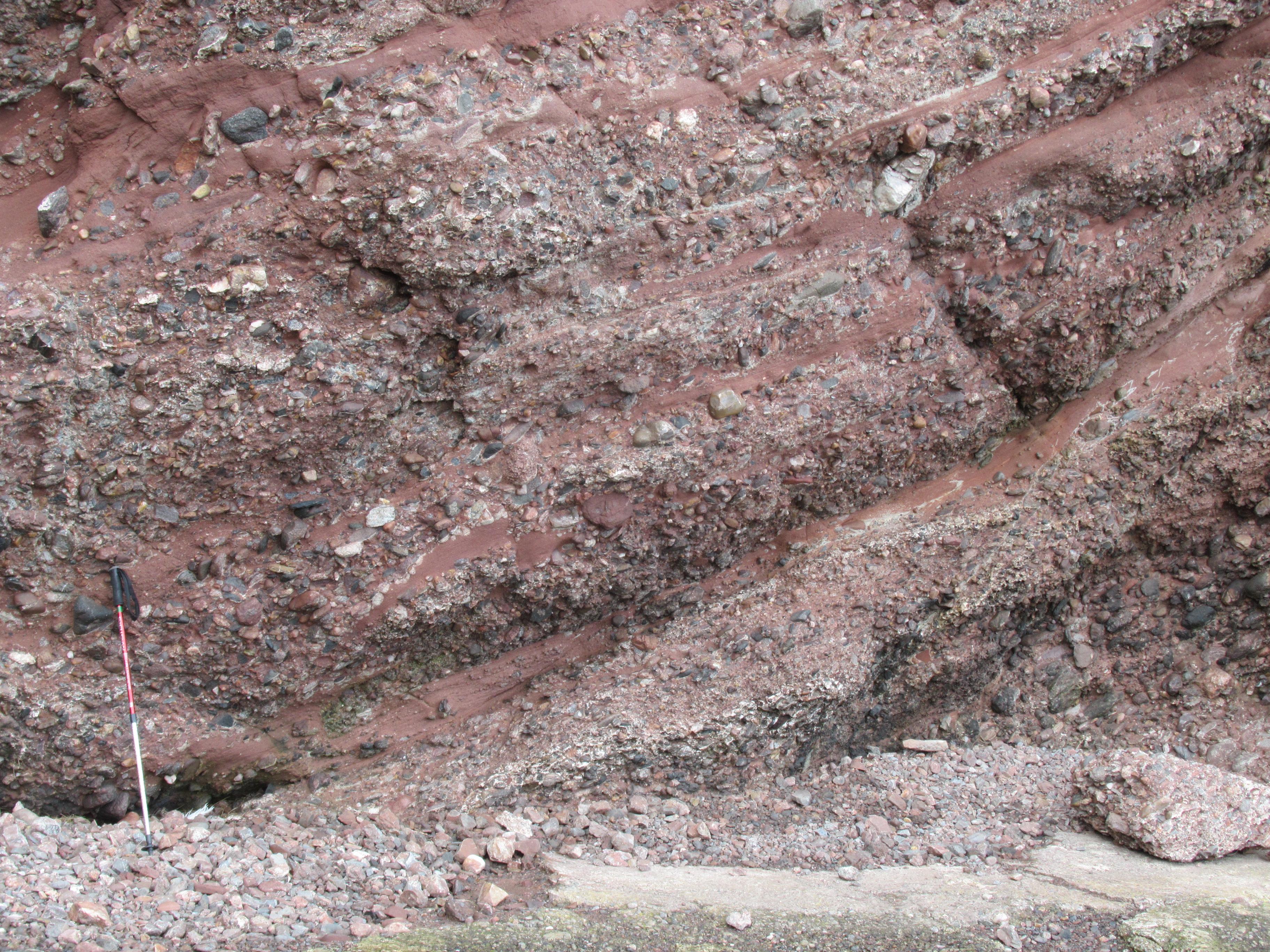
Findon Group on the path to Crovie: conglomerates with red sandstone interbeds. Clasts are subrounded to well rounded quartzite and vein quartz with hardly any slate.
Carol Pudsey
Sept. 24, 2024
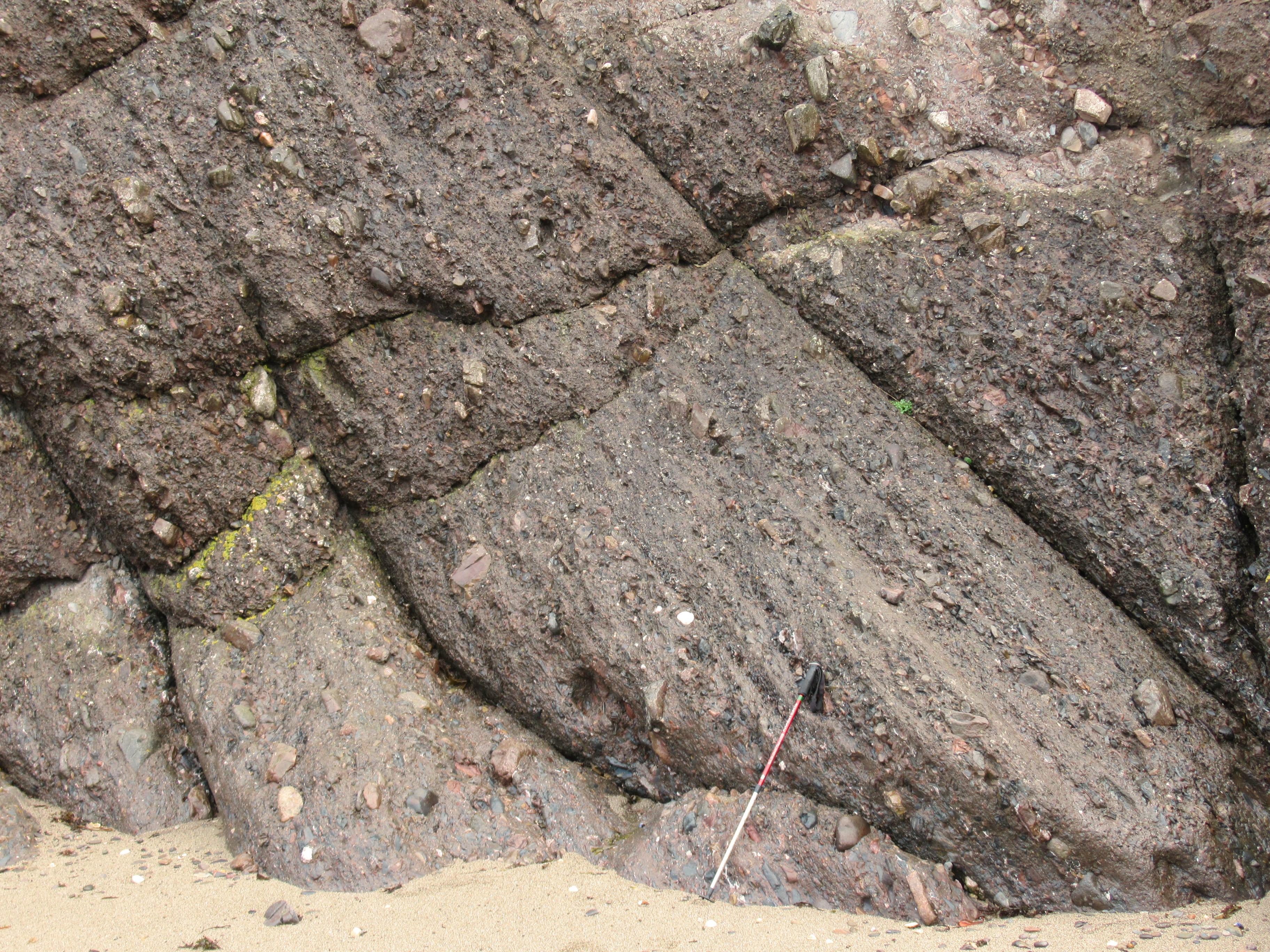
Findon Group: poorly sorted breccias, well bedded, most clasts 2-10cm, some up to 30cm. Subangular to subrounded slates, psammites and schists.
Carol Pudsey
Sept. 24, 2024

Crovie Group: pebbly red sandstones. Large silt clast lower left, erosive base of pebbly bed at top of walking pole.
Carol Pudsey
Sept. 24, 2024
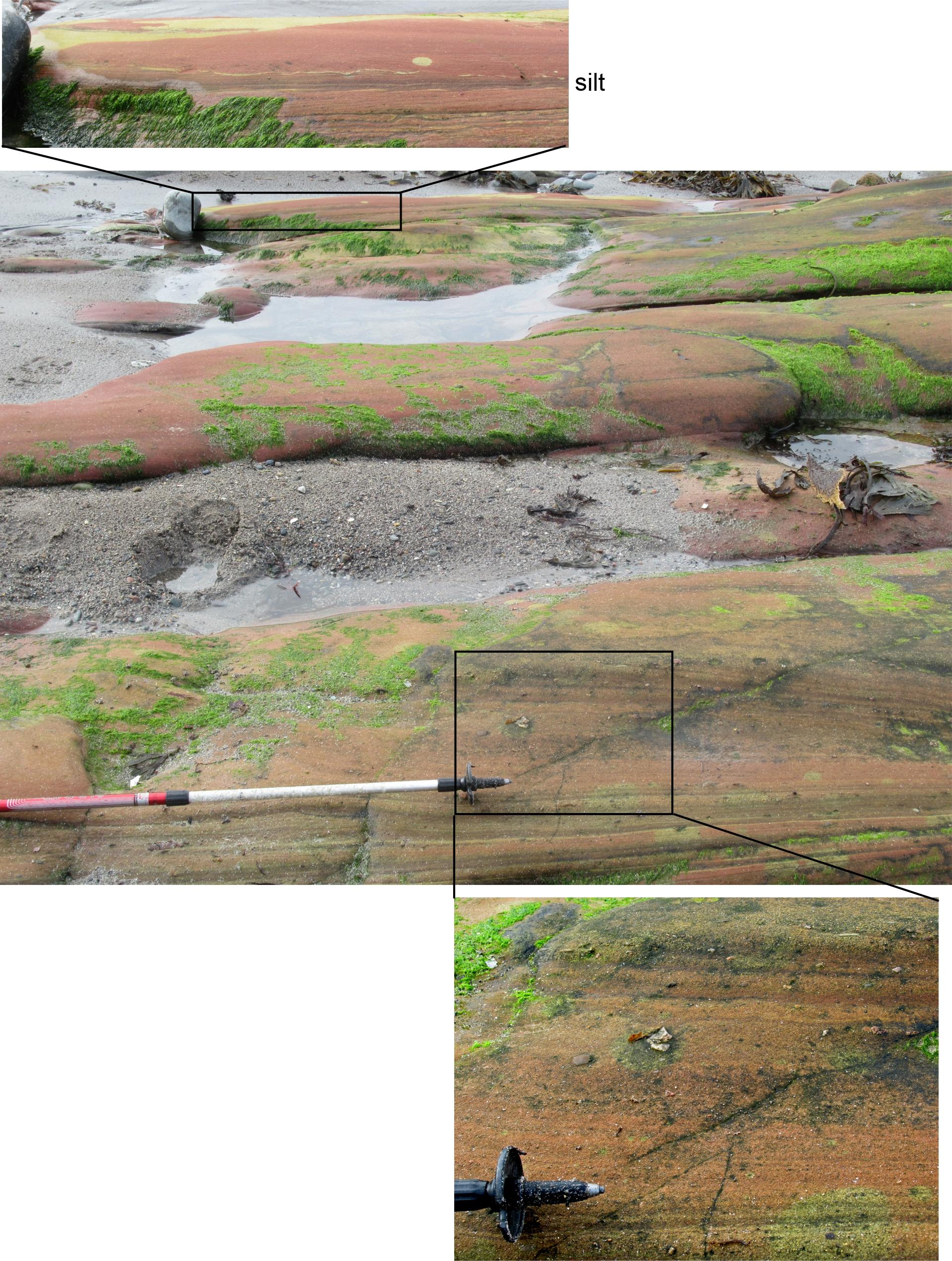
Crovie Group: working up the sequence, the first pebbles (lower inset) appear about 1.5m below the highest siltstones (upper inset).
Carol Pudsey
Sept. 24, 2024
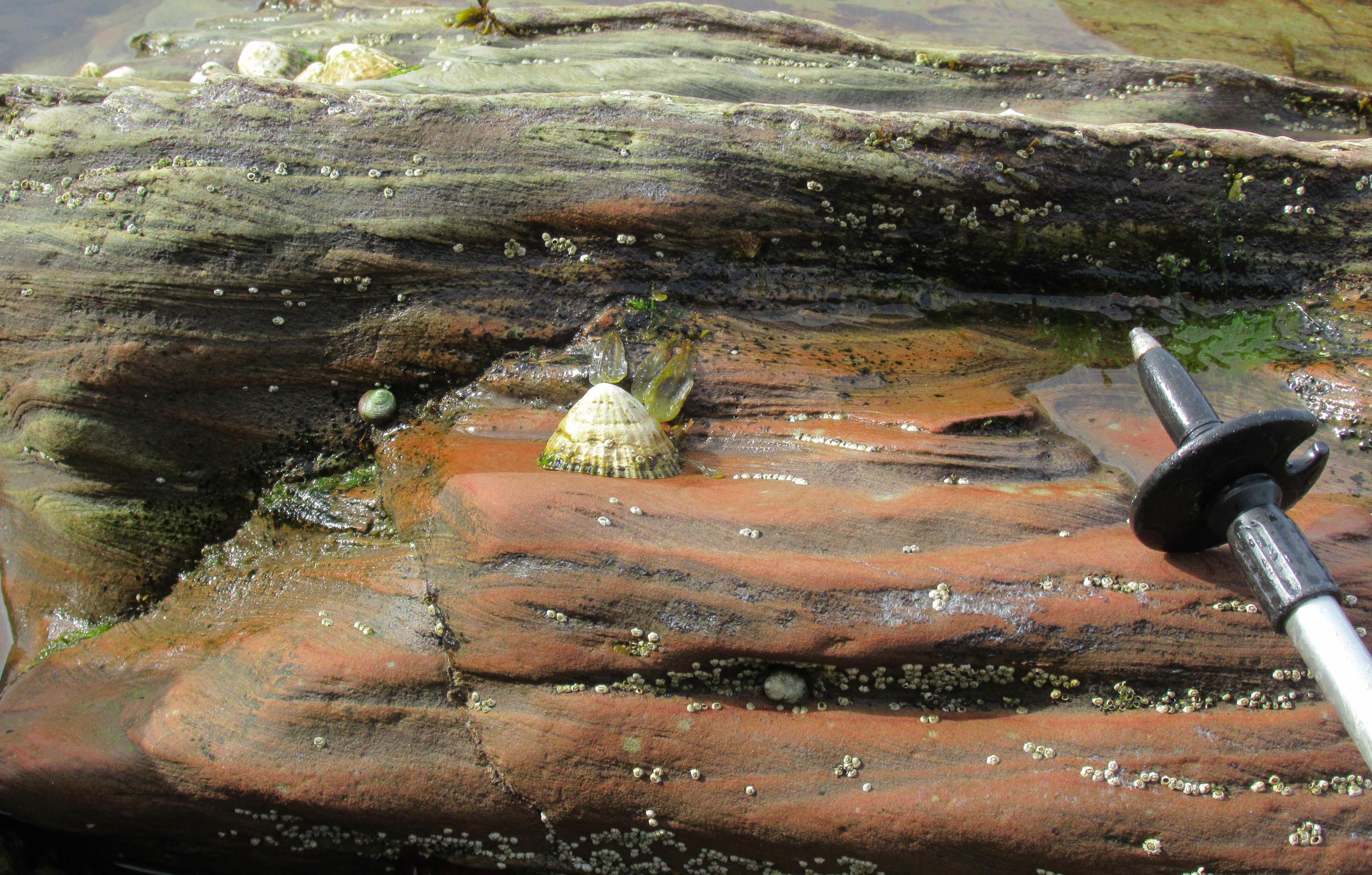
Crovie Group: ripple cross-lamination in fine red and grey-green sandstones.
Carol Pudsey
Sept. 24, 2024
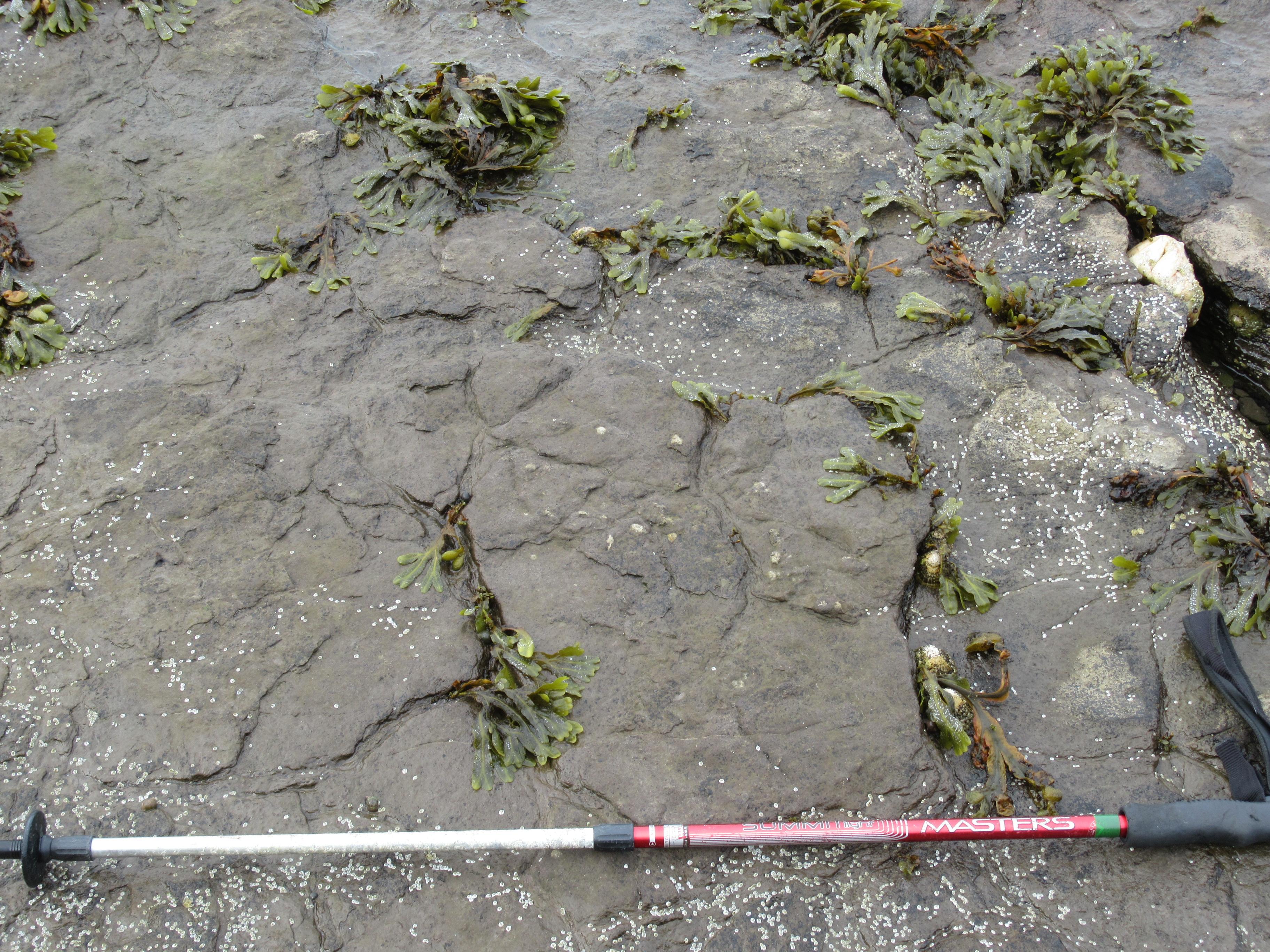
Crovie Group: polygonal mud cracks.
Carol Pudsey
Sept. 24, 2024
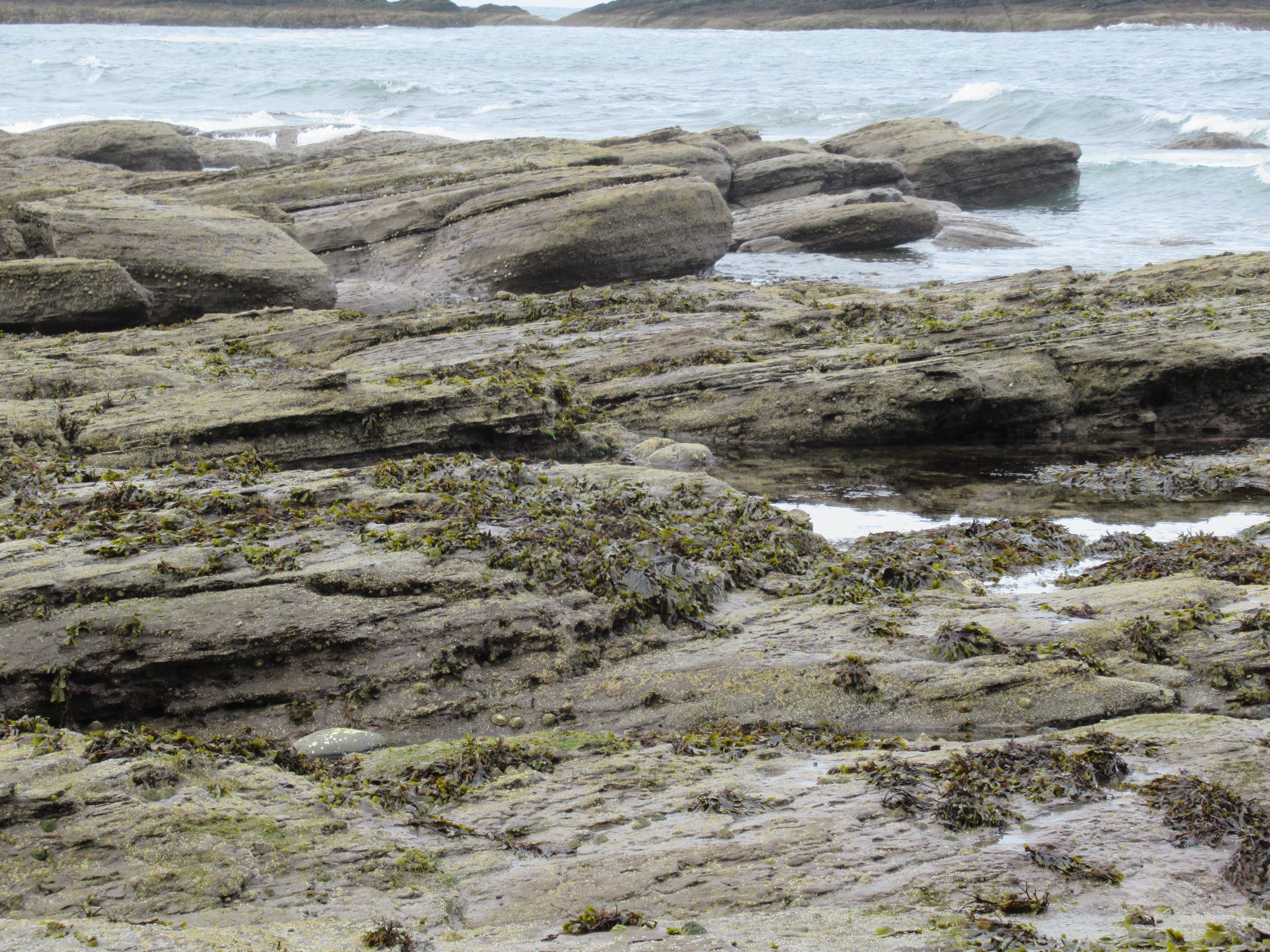
Near the base of the Crovie Group: fine sandstones and siltstones dip gently SW. Much seaweed, barnacles and limpets.
Carol Pudsey
Sept. 24, 2024
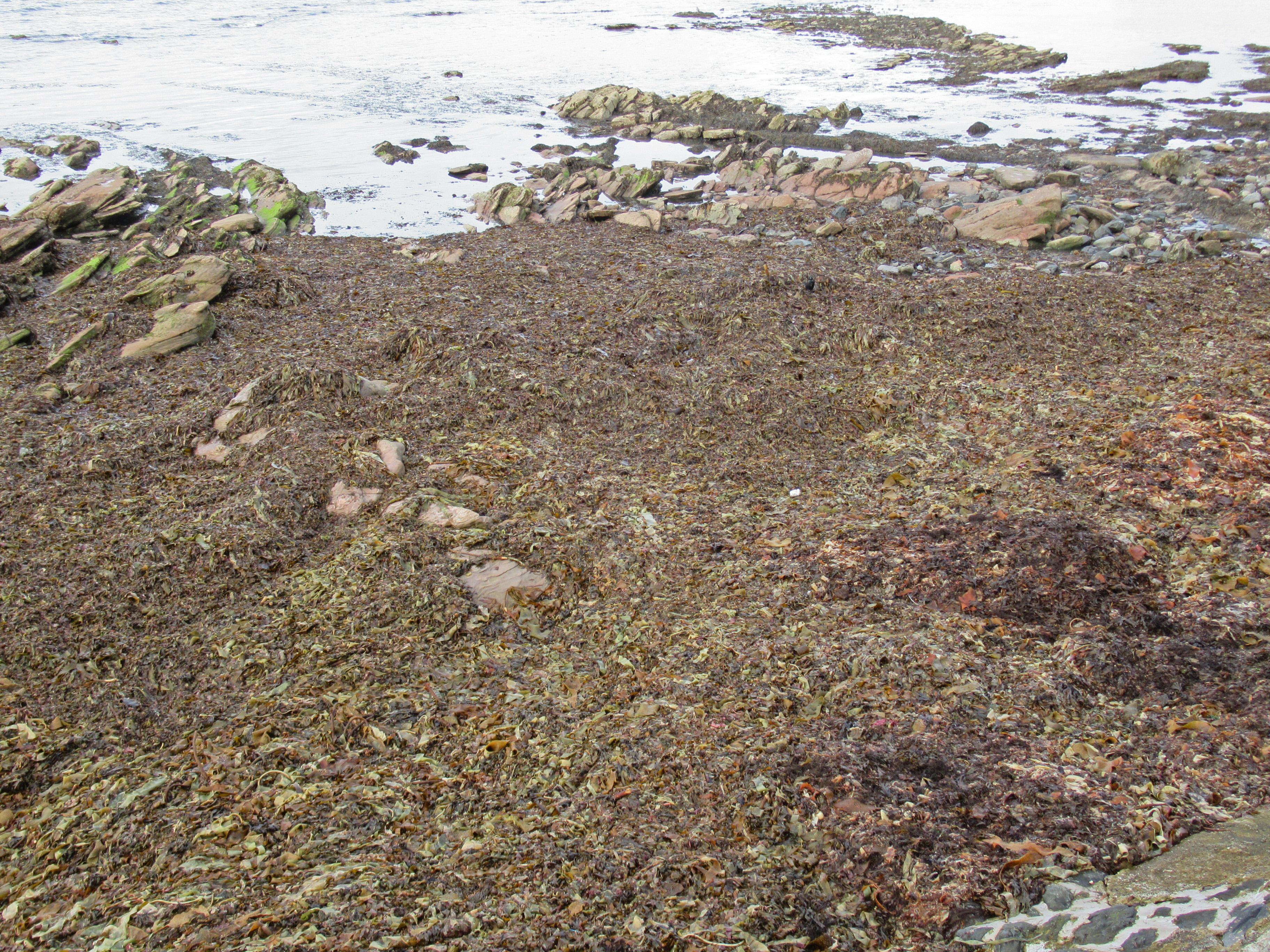
Large amounts of kelp obscure the section in places.
Carol Pudsey
Sept. 24, 2024